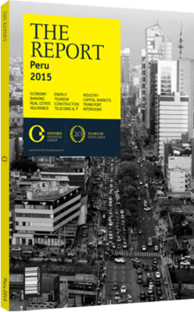The government is working to improve internet access in rural areas
As part of the effort to establish a national fibre-optic network, the Ministry of Transport and Communications (Ministerio de Transportes y Comunicaciones, MTC) has launched the construction of the initial 13,000 km of fibre-optic infrastructure to connect 180 provincial capitals in Peru. The $333m project is set to commence deployment in December 2014. Parallel to this main fibre-optic network a set of 21 other projects will target rural areas. These projects, which will require an investment of $1.2bn, aim to connect 1800 district capitals, 7000 schools and other education institutions, 7500 health centres and 530 police stations.
Funding Infrastructure
Better fiscal performance is allowing the government to invest heavily in telecommunications infrastructure. Much of this is being done through the Telecommunications Investment Fund (Fondo de Inversión en Telecomunicaciones, FITEL), which collects a percentage of sector operators’ annual sales and channels that money into financing projects that are out of reach for private operators.
The MTC in conjunction with FITEL and ProInversión, the body in charge of promoting private investment, will be in charge of taking the 21 regional fibre-optic projects to the market in the coming two years.
The linking of rural areas has been a long delayed effort. Although the liberalisation of the telecommunications sector attracted private investment into communications infrastructure, large grey areas of the country, isolated and with low population density, remained uneconomic to be serviced by the private sector. This is a big deficiency if the government is to use telecommunications as a way to fight poverty and raise social inclusion. Fernando Grados, general manager at Dominio Consultores, a telecommunications consultancy, told OBG that while 80% of urban Peru is well linked to internet, “the figure is less than 10% for the Andean regions and 2% to 3% in the Amazon region”.
These projects aim to deploy an additional 30,000 km of fibre optics and will be essential to effectively connect Peruvian villages. “Private operators service about 15,000 rural villages. FITEL has a similar number of serviced villages. But rural villages in Peru total around 90,000, so there is much work to do,” Luís Montes Bazalar, technical secretary at FITEL, told OBG. Furthermore, the projects will be needed to lower costs, which have served as a barrier for many Peruvians wanting to access internet services.
According to Montes, most rural Peruvians cannot afford more than $15 per month for internet service, making affordability as important as coverage. Humberto Chávez, general manager of Claro, told OBG, “The telecommunication industry needs to be regarded as one of the pillars of sustainable economic growth and put at the same level as infrastructure and education.
Because Peru has a complicated topography, there has to be significant investment in infrastructure and for this the government needs to play a more active role.”
Projects
Improving coverage in Peru’s Andean and Amazonian regions will be no easy task, as demonstrated by the government’s choice to divide the creation of rural fibre-optic networks into so many projects. Not only will this facilitate execution, but it will also allow specific solutions for each project, especially in terms of government co-financing, which will vary from 35% to 40% depending on each project.
The first four regional projects were tendered in mid-2014 and are expected to be awarded in the first quarter of 2015. Covering Ayacucho, Apurimac, Huancavelica and Lambayeque, these will serve 1169 communities and 747,000 people, according to MTC. Furthermore, the four initial projects to connect the regions will include 3000 public institutions, linking schools, police stations, hospitals and government buildings.
The tendering of these four projects will be essential to test the market’s appetite to deploy and operate fibre-optic networks in rural Peru. A dozen companies showed interest in the first round. After the initial four projects are allocated, the government plans to tender four to six new regional projects every quarter until all the 21 regional projects have been awarded.
You have reached the limit of premium articles you can view for free.
Choose from the options below to purchase print or digital editions of our Reports. You can also purchase a website subscription giving you unlimited access to all of our Reports online for 12 months.
If you have already purchased this Report or have a website subscription, please login to continue.

